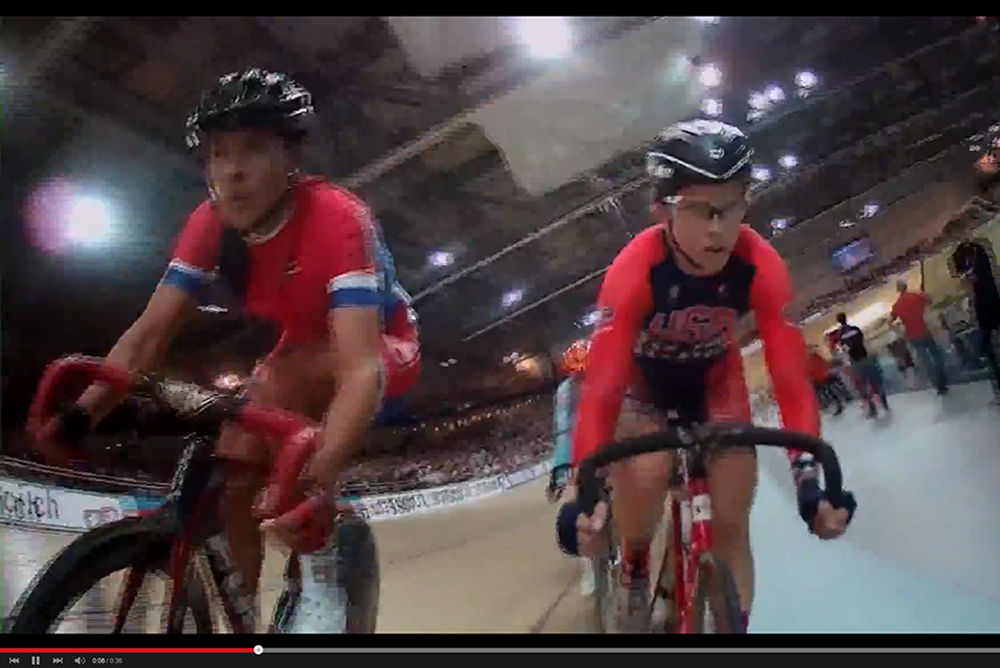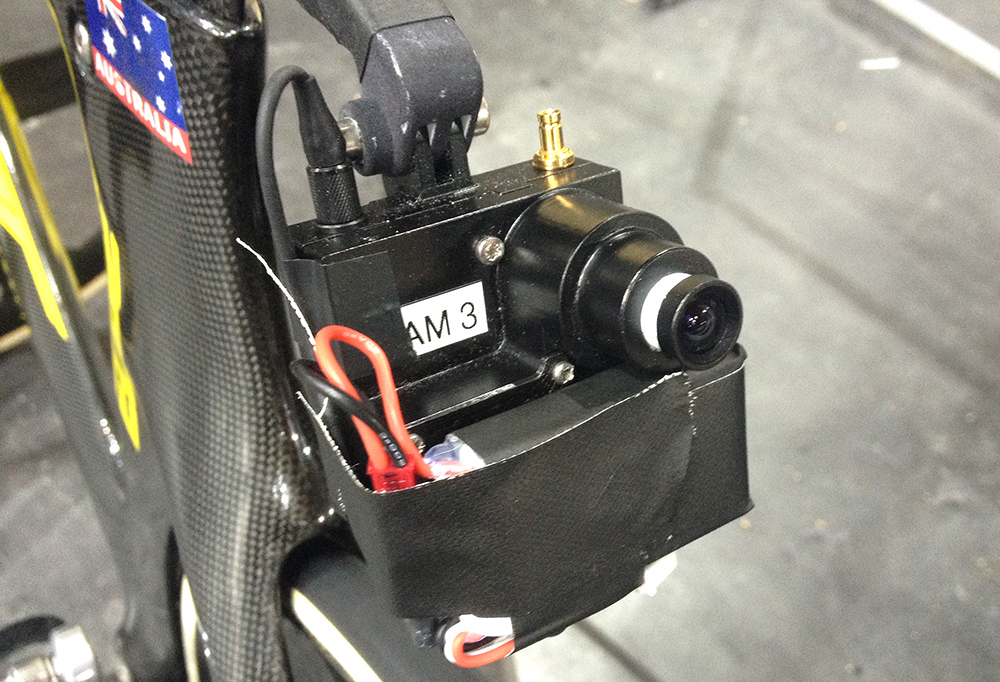Live on-bike footage set for top road races
Company behind live TV footage used at track world championships says technology will eventually move in to road racing


Live on-bike footage was broadcast for the first time in history during the track cycling world championships in Paris last week, and the company behind the innovative project has said it will make it to road racing in the future.
"The challenge for road racing isn’t the camera itself, you can get the weight down, the challenge is the transmission." Said Julien Bertin of production company HBS.
"This one weighs 200 grams, and we have a live transmitter. A GoPro is 160 grams. [The transmitter] is the biggest part and also the heaviest because you need to transmit HD quality pictures."

On bike footage was the big thing in the pro peloton last season and FDJ rider Jeremy Roy has continued to shoot footage this year at the Tour Down Under and camera manufacture GoPro has been looking at teaming up with ASO for the Tour de France
The stable environment of a velodrome was a relatively easy place in which to transmit footage. A road race would be an entirely different prospect. "How do you transmit a signal from a road bike to a receiver looking at a typical race parcours?" Bertin said. "It could be 150 or 200 kilometres long through mountains and tunnels. You are in an environment that is very unstable."
"You could use a helicopter to use the TV signal that comes from the motorbikes, but it becomes very expensive. We’re looking at different technologies; 4G and receivers with relay stations. You can place these in specific regions along a course to transmit the footage."
http://youtu.be/wgKIsnz6BzQ
The latest race content, interviews, features, reviews and expert buying guides, direct to your inbox!
The four cameras used in Paris were custom made and a bit crude with gaffer tape holding the cables in place, but this whole project only started two months ago. "It was a huge achievement from our technical partner, us and the UCI. We could only build four cameras," Bertin said.
In the races where these were used other bikes were equipped with GoPros or dummy cameras, In the name of fairness. Footage from the GoPros was saved for later use.
>>>Jeremy Roy somehow avoids crashes in sprint finish
"There was a bit of reluctancy at first from the teams," Bertin said. "If you look at track cycling the aim is to be aerodynamic and light." HBS and the UCI started by contacting the teams and asking them to send a version of their seat posts. With them they created custom, 3D printed brackets to fit each seat post.

The brackets had to be light, strong, keep the camera away from the riders legs and not move or rattle. "All the tests we conducted with riders, no one ever said they felt the cameras." Said Bertin.
"The first race was the women’s points race. That is the first time we ever had live on board cameras in cycling. Then the men's keirin and since then we’ve done it in the elimination."
We didn’t want to add cameras for timed events. For those they would give more weight and poorer aerodynamics. You don’t want someone to miss a world record by one thousandth of a second because that could have been down to the camera."
http://youtu.be/QEi0cOh_CPk
"We have four receivers high up in the velodrome. You need to always have a clear line of sight [to them]. They get the signals from the camera and we include that in the TV feed in the live production that goes to the directors."
"The challenges are to see how we can get that camera lighter, and maybe a bit more aerodynamic. We could add some sound, theses are challenges that are easy to solve."
"The other is the brackets, to make sure they fit every nationality's bike perfectly in order for it not to move or shake. The other technical challenges are that the more cameras you have the more transmitters you have and the more receivers you need. That makes for a heavy radio frequency area that you have to manage."
"Six cameras means there‘s a lot of hardware in the background and you need a little more cash to invest."

Editor of Cycling Weekly magazine, Simon has been working at the title since 2001. He first fell in love with cycling in 1989 when watching the Tour de France on Channel 4, started racing in 1995 and in 2000 he spent one season racing in Belgium. During his time at CW (and Cycle Sport magazine) he has written product reviews, fitness features, pro interviews, race coverage and news. He has covered the Tour de France more times than he can remember along with the 2008 and 2012 Olympic Games and many other international and UK domestic races. He became the 134-year-old magazine's 13th editor in 2015 and can still be seen riding bikes around the lanes of Surrey, Sussex and Kent. Albeit a bit slower than before.